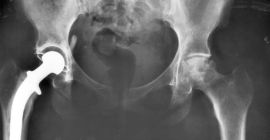Problem 1

is equal to 0.5.
is greater than 0.5.
is less than 0.5.
cannot be determined.
A block is given a short push and then slides with constant friction across a horizontal floor. Which statement best explains the direction of the force that friction applies on the moving block?
Friction will be in the same direction as the block's motion because molecular interactions between the block and the floor will deform the block in the direction of motion.
Friction will be in the same direction as the block's motion because thermal energy generated at the interface between the block and the floor adds kinetic energy to the block.
Friction will be in the opposite direction of the block's motion because molecular interactions between the block and the floor will deform the block in the opposite direction of motion.
Friction will be in the opposite direction of the block's motion because thermal energy generated at the interface between the block and the floor converts some of the block's kinetic energy to potential energy.